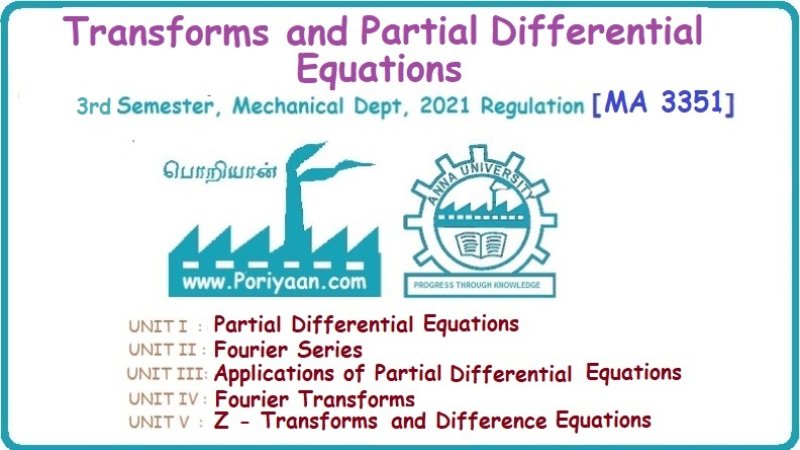Transforms And Partial Differential Equations: UNIT I: Partial Differential Equations
Lagrange's Linera Equation
The equation of the form Pp+ Qq= R is known as Lagrange's equation when P, Q & R are functions of x, y and z.
LAGRANGE'S LINEAR EQUATION
The equation of the form Pp+
Qq= R is known as Lagrange's equation when P, Q & R are functions of x, y
and z.

Working
Rule
First step: Write down the subsidiary equations

Second step: Solve the above
subsidiary equations.
Let the two solutions be u=a and
v=b
Third step: Then f(u, v) = 0 or u =
(v) is the required
solution of P p + Qq = R
Generally, the subsidiary equation
can be solved in two ways.
1. Method of Grouping
2. Method of Multipliers
1. Method of Grouping
In the subsidiary equation
ppppppppppp if the variables can be separated in any pair of equations, then we
get a solution of the form u (x, y) = = a and v (x, y) = b.
2. Method of Multipliers
Choose any three multipliers 1, m,
n which may be constants or function of x, y, z we have

If it is possible to choose l, m, n
such that IP + mQ+nR then ldx + mdy + ndz = 0
If ldx + mdy+ndz is an exact
differential then on integration we get
a solution u = a.
The multipliers l, m, n are called
lagrangian multipliers.
Transforms And Partial Differential Equations: UNIT I: Partial Differential Equations : Tag: : - Lagrange's Linera Equation
Related Topics
Related Subjects
Transforms and Partial Differential Equations
MA3351 3rd semester civil, Mechanical Dept | 2021 Regulation | 3rd Semester Mechanical Dept 2021 Regulation
